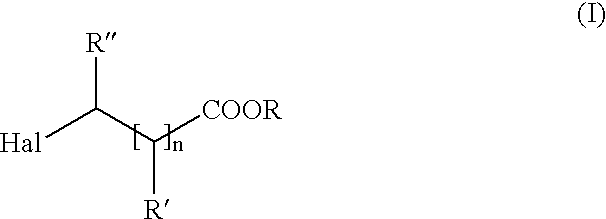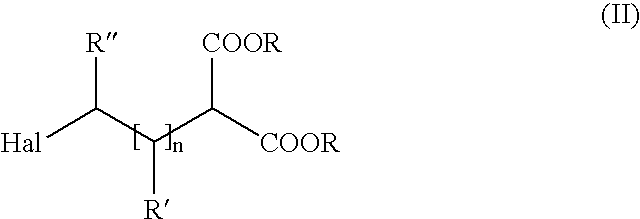Method of producing amino carboxylic acids
a technology of amino carboxylic acid and amino acid, which is applied in the preparation of amino-carboxyl compounds, chemistry apparatus and processes, and organic chemistry, etc. it can solve the problems of low reaction yield, poor access to reactants, and inability to carry out large-scale practical operations, so as to achieve high space/time yield and influence on rapidity and yield of product formation
- Summary
- Abstract
- Description
- Claims
- Application Information
AI Technical Summary
Benefits of technology
Problems solved by technology
Method used
Image
Examples
examples
[0043]1.5 moles of potassium cyanate are placed in 750 ml dimethylformamide and heated to 140° C. Then, a mixture of 1.5 moles of 8-chlorooctanoic acid ethyl ester and 1.65 moles ethanol are charged in over a period of 1 hour. The mixture is agitated 3 more hours at 140° C., until conversion is complete. The precipitated potassium chloride is filtered off and excess dimethylformamide is removed on a rotary evaporator under vacuum. The raw product obtained in this manner is placed in a receiver at 100° C. without further cleaning and without solvent. Then, a mixture of 887 g of concentrated HCl and 162 g water is charged over a period of 1.5 hours. After complete conversion (approximately 3 hours), cyclohexane is added, water spun out and the precipitated solid filtered off. After multiple washings and dryings of the product in a vacuum, the hydrochloride of 8-amino octanoic acid is obtained as a white, crystalline solid (melting point:141-144° C.) with 80% yield.
PUM
| Property | Measurement | Unit |
|---|---|---|
| temperature | aaaaa | aaaaa |
| temperature | aaaaa | aaaaa |
| temperature | aaaaa | aaaaa |
Abstract
Description
Claims
Application Information
 Login to View More
Login to View More - R&D Engineer
- R&D Manager
- IP Professional
- Industry Leading Data Capabilities
- Powerful AI technology
- Patent DNA Extraction
Browse by: Latest US Patents, China's latest patents, Technical Efficacy Thesaurus, Application Domain, Technology Topic, Popular Technical Reports.
© 2024 PatSnap. All rights reserved.Legal|Privacy policy|Modern Slavery Act Transparency Statement|Sitemap|About US| Contact US: help@patsnap.com










